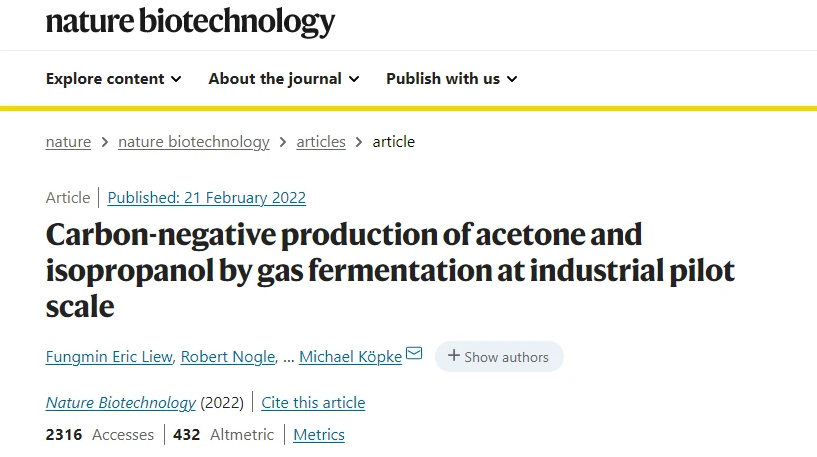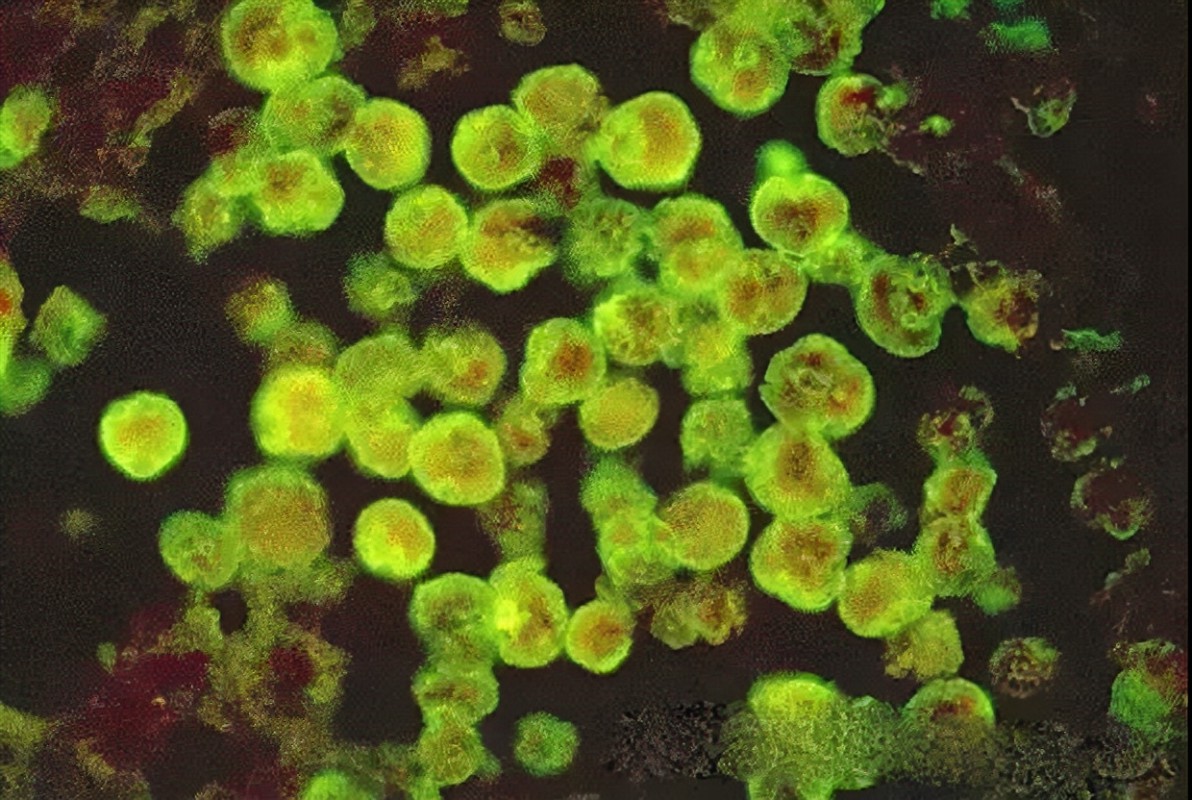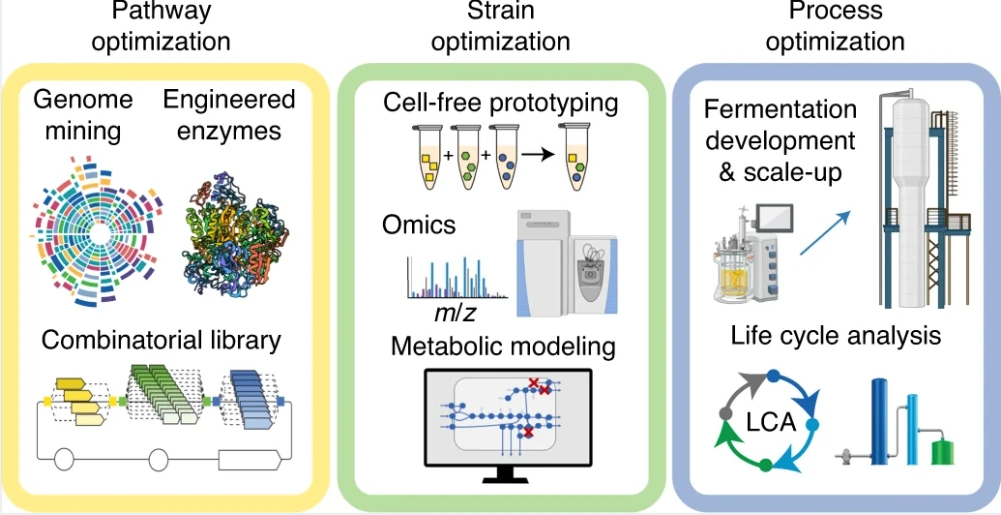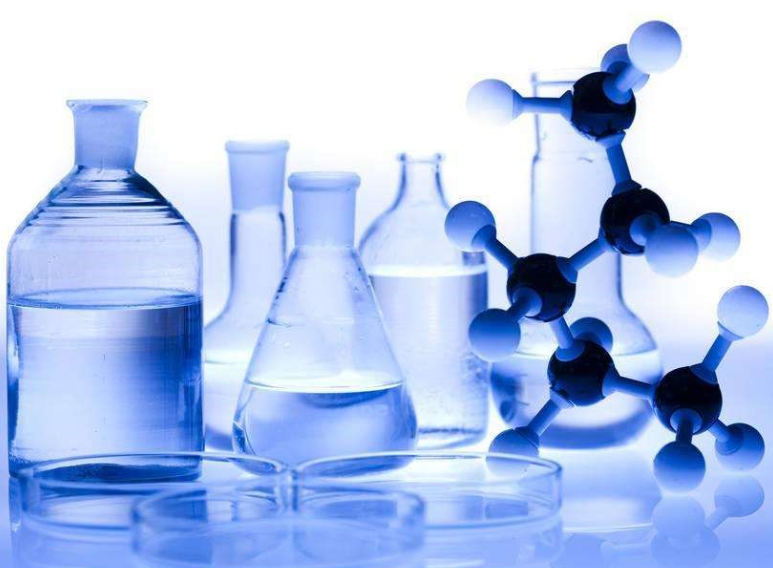创新背景
温室气体问题威胁环境和人类生存,科学家不断寻找解决二氧化碳的方法,试图将其转化为可利用资源,在减少温室气体的同时增强资源循环利用。
创新过程
细菌的分解作用被运用于许多技术上,美国西北大学、碳回收技术公司LanzaTech和美国能源部橡树岭国家实验室合作研究,利用细菌分解工业生产中产生的二氧化碳,进而制造工业化学品,相关研究成果发表在2022年出版的《自然生物技术》杂志上。

研究选择使用一种名为产乙醇梭菌的工程细菌菌株开发了碳捕获技术,证明了细菌将二氧化碳转化为丙酮和异丙醇(IPA)的能力。研究人员表示,菌株工程和优化途径酶的无细胞策略是创新方法的基础,将生产时间缩短了一半。

研究在途径筛选、菌株优化和工艺开发方面都进行了创新。筛选了近 300 株菌株来获取可用于丙酮和异丙醇生产途径的酶。确定可用的菌株后研究人员建立了一个组合 DNA 文库,用来寻找优化生产的酶变体。采用尖端的合成生物学工具以及西北大学的无细胞系统设计、LanzaTech的高级建模和橡树岭国家实验室的分子分析进一步优化,将优化菌株的规模扩大,实现了高达3/g/L/h 的工业生产率。

研究人员在开发过程中发现细菌可产生大量的化合物 3-HB。这种化合物位于关键代谢途径的中间,将探员引向其他方向,需要经过下游处理并增加成本。研究利用蛋白质和代谢物谱显示细胞内部产生瓶颈的位置,得出下一步需要修改的途径,使更多的碳流向产品。
丙酮和异丙醇被广泛使用,是数千种产品的基础,可用作燃料、织物和化妆品等。这两种化学品由化石燃料产生,生产过程会排放大量二氧化碳。新工艺用二氧化碳生产两种化学品,既保证工业需求,又将二氧化碳回收利用。目前该工艺已扩大到工业中试规模,还有望简化生产其他有价值化学品的流程。

研究团队进行生命周期分析后发现,新的减碳方法与传统工艺相比大概可以减少160%的温室气体排放。
创新关键点
利用细菌菌株开发气体发酵工艺,回收二氧化碳制作丙酮和异丙醇。
创新价值
在可持续和可再生的基础上结合生物学,减少二氧化碳排放,避免气候灾难,改变生物经济。
Using bacteria to convert carbon dioxide into chemicals
The decomposition of bacteria is applied to many technologies, northwestern university, carbon recovery technology company LanzaTech and the U.S. Department of Energy Oak Ridge National Laboratory collaborative research, the use of bacteria to decompose carbon dioxide produced in industrial production, and then make industrial chemicals, the relevant research results published in the 2022 issue of the journal Nature Biotechnology.
The study chose to use a strain of engineered bacteria called Clostridium ethanol-producing to develop carbon capture technology, demonstrating the bacteria's ability to convert carbon dioxide into acetone and isopropanol (IPA). The researchers say strain engineering and a cell-free strategy to optimize pathway enzymes are the basis for an innovative approach that cuts production time in half.
Research has led to innovations in pathway screening, strain optimization, and process development. Nearly 300 strains were screened for enzymes that can be used in acetone and isopropanol production pathways. After identifying available strains, the researchers built a library of combined DNA to look for enzyme variants that optimize production. The use of cutting-edge synthetic biology tools, as well as northwestern university's cell-free system design, lanzaTech's advanced modeling, and further optimization of molecular analysis at Oak Ridge National Laboratory, will scale up to 3/g/L/h of industrial productivity.
Researchers discovered during development that bacteria can produce a large number of compounds, 3-HB. The compound sits in the middle of key metabolic pathways that lead agents in other directions, requiring downstream treatment and increasing costs. Studies use protein and metabolite spectra to show where bottlenecks are occurring inside the cell, and figure out the pathways that need to be modified next to allow more carbon to flow to the product.
Acetone and isopropanol are widely used and are the basis for thousands of products that can be used as fuels, fabrics and cosmetics, among others. These two chemicals are produced from fossil fuels, and the production process emits a lot of carbon dioxide. The new process uses carbon dioxide to produce two chemicals, both to ensure industrial demand and to recycle carbon dioxide. The process has now been expanded to industrial pilot scale and is expected to simplify the production of other valuable chemicals.
After conducting a life cycle analysis, the research team found that the new carbon reduction method can reduce greenhouse gas emissions by about 160% compared with traditional processes.
智能推荐
创新使用数学和计算机科学分析肠道微生物
2022-08-16利用数学和计算机科学助力研究肠道微生物组相互反应作用,为虚拟模型的开发和验证以及肠道微生物研究做出贡献。
涉及学科涉及领域研究方向新型光激活涂层用于杀死细菌
2022-08-04伦敦大学学院(ucl)领导的研究团队开发出了一种可以在低强度的光线下激活,杀死金黄色葡萄球菌和大肠杆菌等细菌的新型涂层。
涉及学科涉及领域研究方向利用人工智能预测酶活性
2022-08-09牛津大学化学和工程科学系的研究人员发现了一种预测酶活性的通用方法。该研究发表在《自然化学生物学》杂志上,研究人员的新人工智能方法是基于酶的序列,以及筛选已定义的底物“训练集”和正确的化学参数来定义它们。
涉及学科涉及领域研究方向创新通过HDCR酶结构转化储存二氧化碳
2022-08-04探究丝状HDCR酶的结构和原理,开发二氧化碳转化储存的新方法。
涉及学科涉及领域研究方向